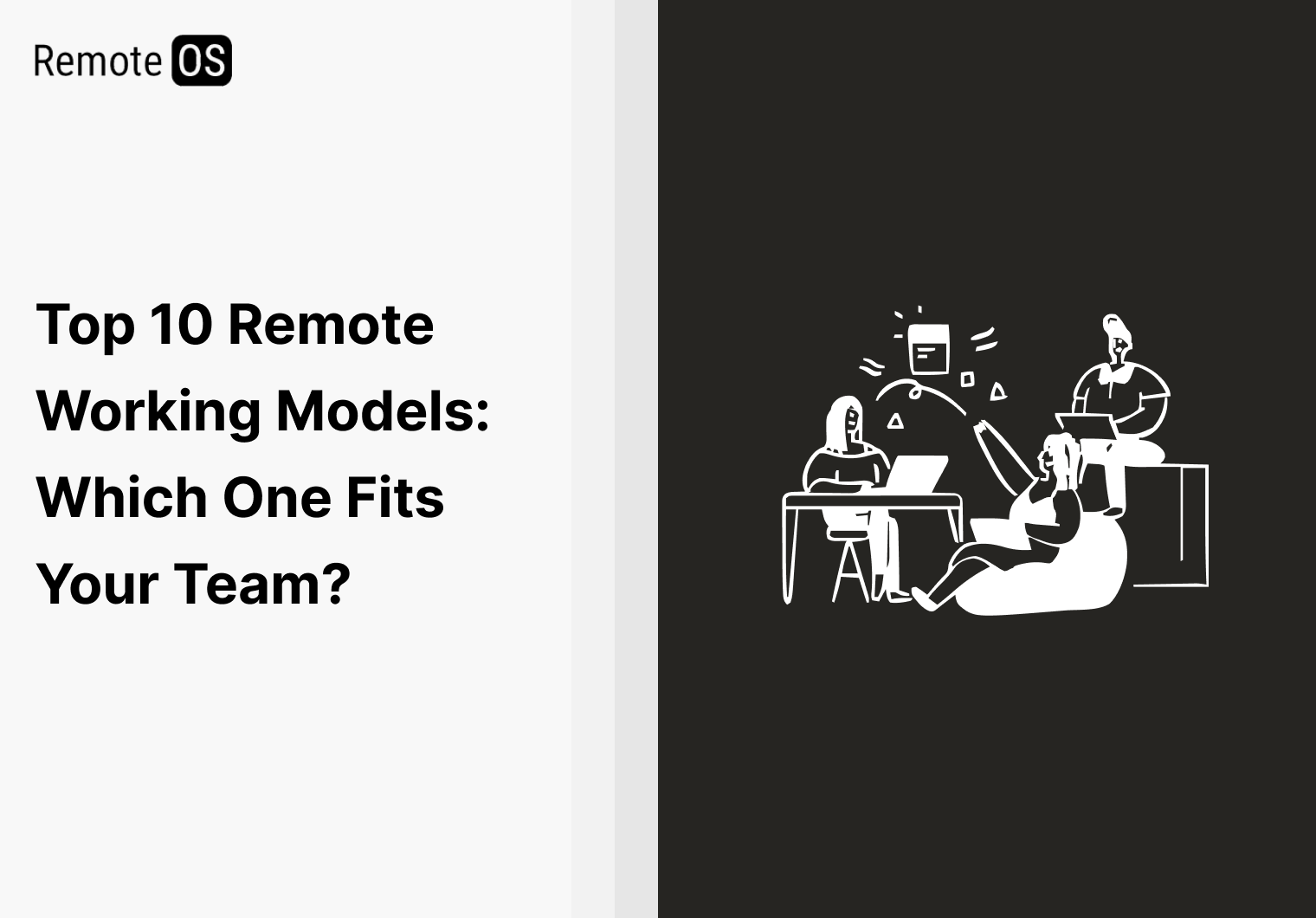Introduction
Remote work is no longer a trend; it’s a new way of working. As companies and employees adapt to this shift, different remote working models have emerged with unique advantages. We will discuss in detail the top remote working models and how they could serve different organizational needs and employee preferences in this blog.
1. Fully Remote Model
- Overview:
In the fully remote model, all employees work from different locations, usually from home or coworking spaces. - Key Benefits:
No physical office is maintained by companies in this model; therefore, they can cut down on overhead costs and make effective hiring of varied talents around the world. - Flexibility:
This model fosters maximum flexibility, whereby employees can work from wherever they feel most comfortable.
2. Hybrid Remote Model
- Overview:
The hybrid remote model is a flexible approach that combines remote work with in-office presence. - Work Arrangement:
For example, it can allow employees to work from home for some days of the week and spend other days in the office. - Collaboration:
The model offers collaboration and bonding between team members physically while giving the flexibility associated with remote work.
3. Distributed Team Model
- Overview:
This model describes distributed teams spreading over different locations, often multiple time zones. - Suitability:
This is very excellent for global companies who want a continuous workflow and around-the-clock operations. - Challenges:
While this model offers great geographic flexibility, it equally demands good communication tools and strategies in order to make collaboration effective.
4. Satellite Office Model
- Overview:
The satellite office model involves the creation of smaller, remote offices at various locations that could be closer to where employees live. - Benefits:
This model incorporates the benefits of remote work with the benefits of a physical office space. - Cost Efficiency:
With this, a regional presence is granted to companies without incurring all the expenses involved in maintaining a large central office.
5. Freelance/Contractor Model
- Overview:
In the freelance or contractor model, companies hire self-employed individuals for some specified project or on a contract basis. - Workforce Flexibility:
Freelancers or contractors mostly work remotely and are not regular employees of the company. - Scalability:
This model offers companies the ability to scale their workforce according to project needs and access specialized skills without long-term commitments.
6. Hub-and-Spoke Model
- Overview:
The hub-and-spoke model entails a central office—the so-called hub—supported by satellite offices or remote workers working from the so-called spoke locations. - Flexibility and Centralization:
Workers may choose to work from a central or satellite office or work from home. - Collaboration:
This gives employees flexibility but still allows for a core site of work for meetings and collaboration.
7. Remote-First Model
- Overview:
The remote-first model is also a variant of the fully remote model where remote work is the default mode of operation, but there might be an office available for people who actually want to work on-site. - Design and Communication:
In this model, all processes and tools are designed, and communication methods are taken into consideration with remote work in mind. - Cultural Integration:
This makes sure to integrate the remote employee into the company culture.
8. Asynchronous Work Model
- Overview:
In this asynchronous model of work, there is no need for staff to work simultaneously or adhere to some typical 9-to-5 schedule. - Flexibility:
Employees do tasks and communicate with colleagues when it best suits their individual schedule. - Time Zone Management:
This really works in teams across time zones, working out with high flexibility and autonomy.
9. Remote Work with On-Site Visits
- Overview:
This model involves telecommuting, with occasional visits to the site for meetings, team-building activities, or any project to which employees have to contribute collaboratively. - Balance:
Whereas in the majority of cases the employees work from home, they meet in person once in a while. - Benefits:
Therefore, this approach combines the benefits associated with telecommuting and the benefit associated with face-to-face interaction and may be particularly beneficial in those companies that value periodic in-person engagement.
10. ROWE Model (Results-Only Work Environment)
- Overview:
The ROWE model is based on the fact that employees must be judged on the basis of their output and results, as opposed to hours spent at work. - Autonomy:
Employees working under this model are given full responsibility and independence to choose the time and place of work so long as the set targets and goals within the stipulated deadlines are met. - Focus on Productivity:
This model underscores productivity and performance; hence, it is perfect for individuals who understand self-motivation.
Conclusion
Choosing the right model of remote working is significant both for organizational success and employees’ satisfaction. Each has different benefits for different needs, such as maximum flexibility, ensuring proper collaboration, or increasing access to skilled talent for the company. With this in mind, understanding these models will make you design a remote work strategy that best suits your company’s goals and workforce preference.
Feel free to give your feedbacks and suggestions in the comments section on have you understood these remote working models?
Follow RemoteOS for updates on interesting articles!
Keep exploring and innovating!!


Leave a Reply